
Planning a trip to Israel? Don’t miss the chance to visit the iconic ruins of Masada. Whether as a standalone day trip or part of a broader itinerary that includes the Dead Sea, Masada offers a unique glimpse into Israel’s rich history. In this post, we’ll guide you through everything you need to know about the best things in Masada, ensuring you’re well-prepared for an unforgettable journey through time.
Table of Contents
1. See Masada Fortress
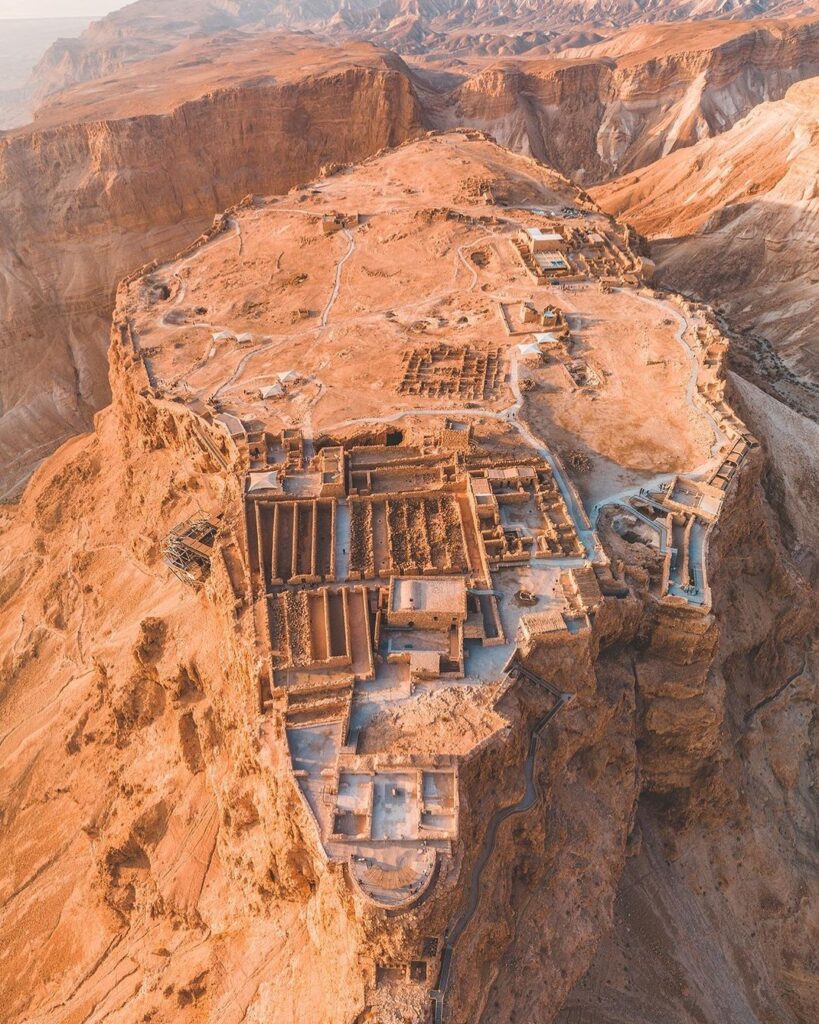
When we talk about the fortress or ruins of Masada, we are referring to the entire archaeological complex, which considers itself a national park. Inside the complex, you can see the remains of buildings from the era, such as Roman baths, synagogues, watchtowers, and the castle. But we’ll tell you more about it later.
In summer it is very hot in Israel, but don’t worry because the complex has shaded areas and benches where you can rest.
The prices and opening hours:
- The park is open every day from 8:00 a.m. to 5:00 p.m., except Friday when it closes at 4:00 p.m. In winter it closes an hour earlier.
- The entry price is €7.7. If you take the cable car, you must add €12, unless it’s a one-way ticket, in which case it’s €7.
2. Visit Roman baths on a trip to Masada

The Roman Baths are one of the best preserved and most striking buildings. You can see mosaics and murals painted on the walls. You can also visit some large rooms used to store cereals, wine, and oil.
Next to the thermal baths is the Water Gate, through which the animals brought water to fill the reservoirs.
3. Byzantine gate, the entrance to the fortress
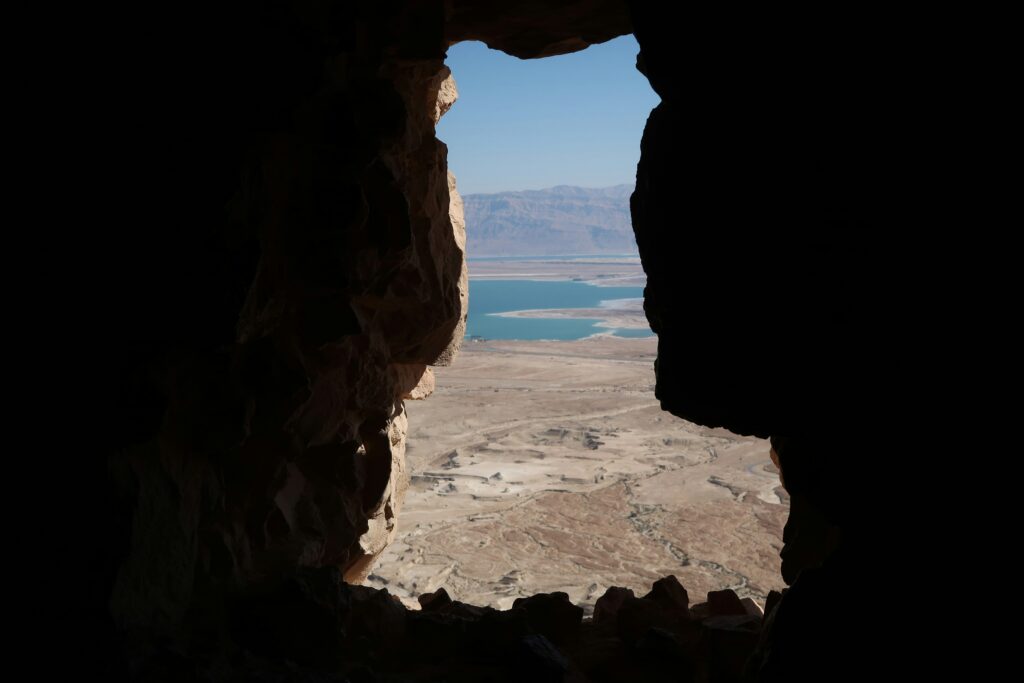
The Byzantine gate, located west of the fortress, is a good starting point for the visit. It was built in the 1st century during the Byzantine invasion, a key turning point in Israel’s history. Throughout the complex, one can see how different peoples left their mark on the fortress buildings, such as the Jews, Romans, and Byzantines.
4. The tannery tower and its impressive views
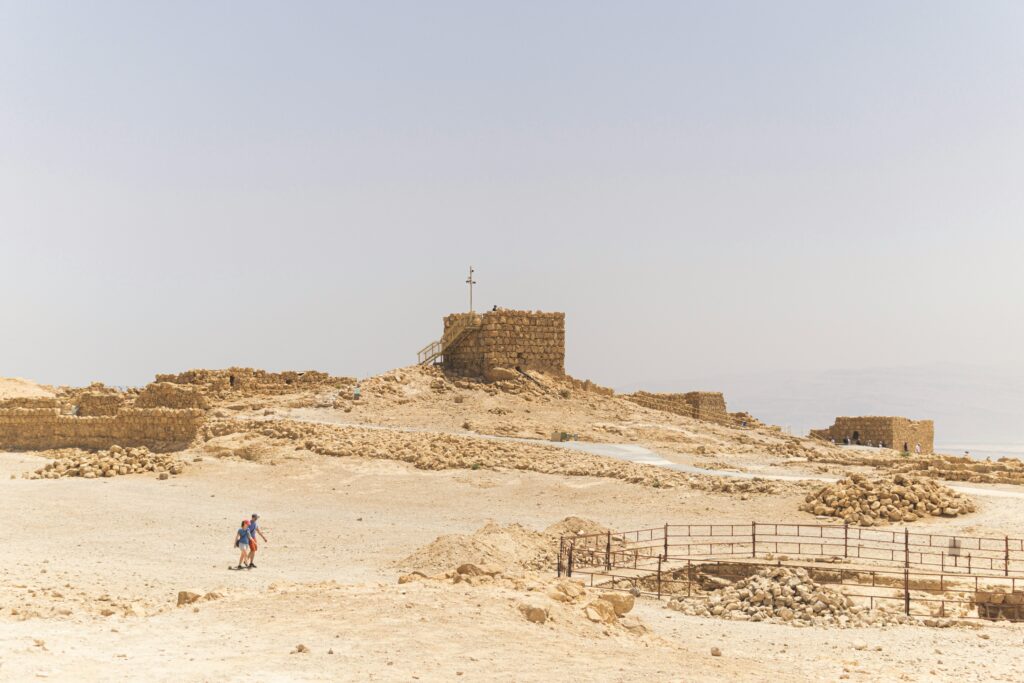
It is curious to see the variety of buildings in the complex. One of these buildings is the Tannery tower, where the hides were worked. But the most spectacular is the view from the top of the tower, which allows you to see the West Palace.
5. West Palace and North Palace
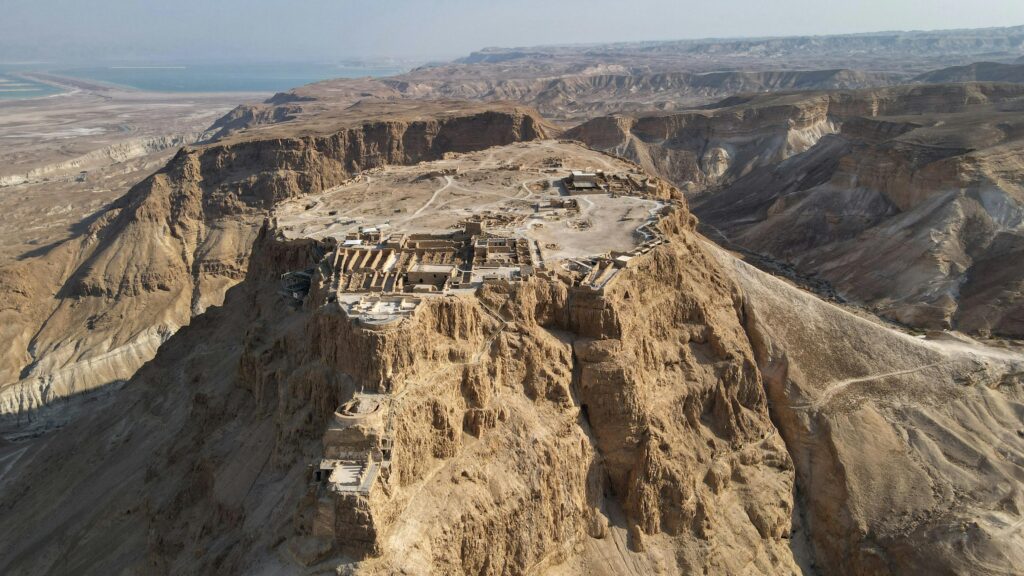
The West Palace was commissioned by Herod in the 1st century and retains several rooms that can be distinguished, such as the baths. However, the main building on the site is the North Palace, Herod’s residence. The most curious aspect of this building is the way it is built on terraces that slope down along the plateau.
6. Viewpoints on a trip to Masada

The fortress is surrounded by a series of lookouts from which there are breathtaking views of the desert. The most spectacular is the East Belvedere and the South Belvedere. It is worth strolling around the edges of the complex, past what were once luxurious palaces, to appreciate the surroundings.
7. Museum at the foot of the mountain
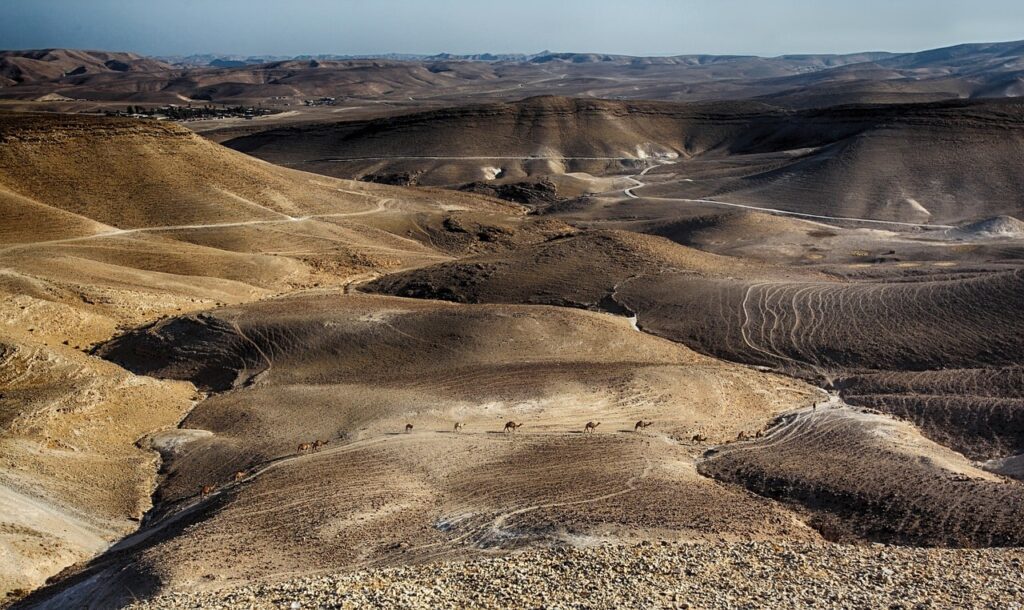
At the base of the fortress is a museum that many people ignore because they want to climb Herod’s Castle, but it is worth a visit. You will discover the history of the fortress and the different battles that took place there. The visit is all the more interesting as you can visualize the history of Masada.
What to see on a trip around Masada?
1. Herodium National Park

As we mentioned above, Masada is very far from major cities and it takes a long time to get there. If you want to see something similar and closer to Tel Aviv and Jerusalem, we recommend visiting Herodium National Park.
Herodium National Park is a good alternative to Masada. This is the fortress built by Herod in the Judean Desert, south of Jerusalem. This is a very similar complex to Masada, and you can also see Herod’s Tomb.
2. Dead Sea
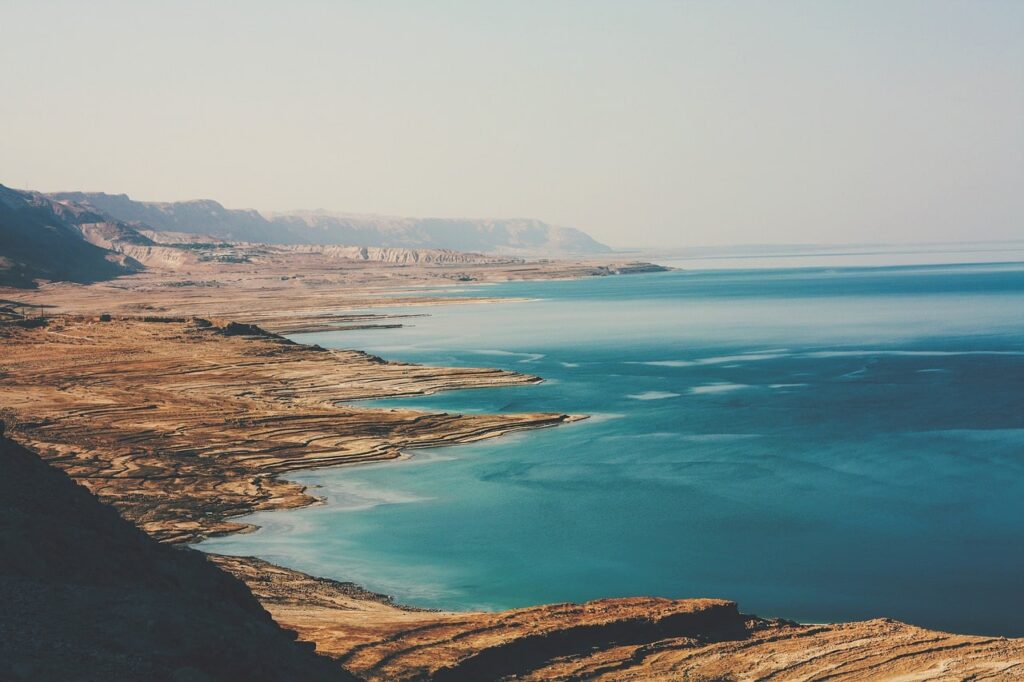
The Dead Sea is probably familiar to you as the lowest point on Earth with the highest concentration of salt, which means you can float. But this sea has much more to offer. You can relax on the surrounding beaches and resorts, visit nearby towns, or swim in the sea.
Getting there by public transport is a bit complicated. This is why it is recommended to get there by private car (2 hours from Masada) or with organized excursions.
What to see in Masada in 1 day?
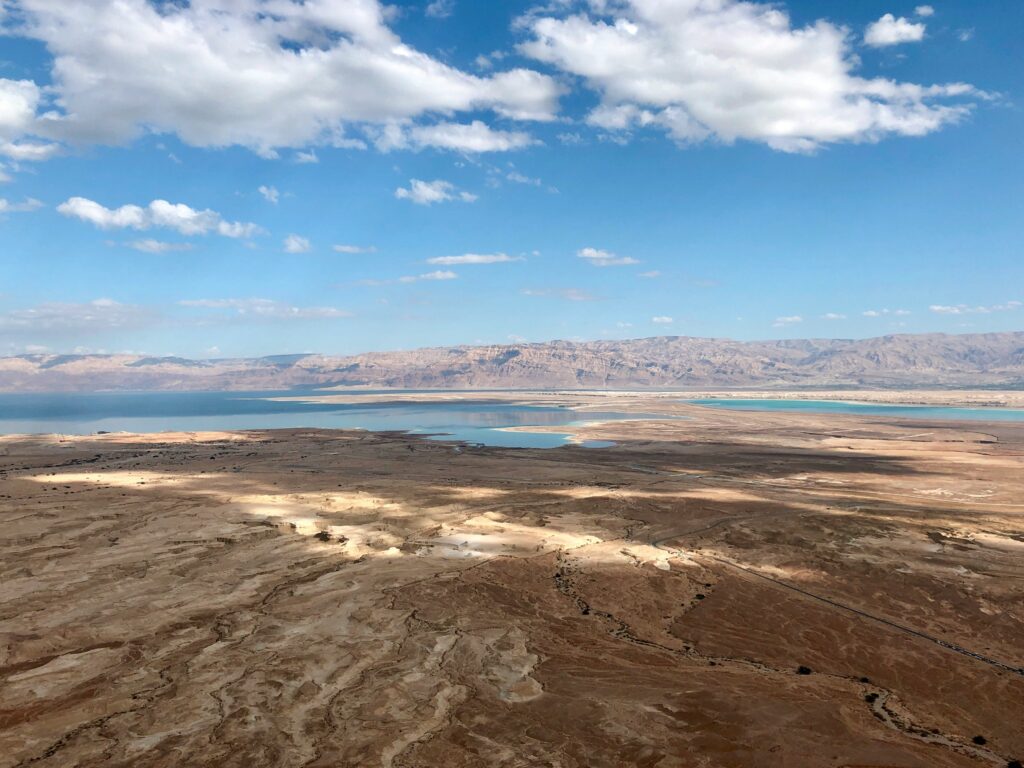
A few hours are enough to see Masada. However, keep in mind that depending on where you are coming from, you will have to drive several hours to get there. It is therefore advisable to plan a whole day or to include this stage in itineraries across the country or on the Black Sea route.
In Masada, you can wander among the ruins, admire views of the national park, and learn about the history of the fortress at the resort’s interpretation center. It is very interesting to discover how each village left its mark on Masada.
Where and what to eat on a trip to Masada?

Masada is not one of the best places to sample wonderful Israeli cuisine, as there are virtually no restaurants. In fact, there is only one buffet which is always full of tourists. We therefore recommend bringing snacks or waiting to eat elsewhere along your route, such as in Arad or Ein Bokek. If you go on an organized tour, they will find you a place to eat.
Here are some of the best restaurants near Masada:
- Masada National Park Restaurant : it is the only restaurant in the fortress complex. This is an Israeli buffet restaurant that also offers vegan options. The menu costs around €22 and, although it’s not extraordinary, you won’t go hungry.
- Aroma Cafe : a cafe located in Ein Bokek that serves the best breakfasts in the area. It also offers simple dishes to eat at an affordable price.
Where to stay while traveling to Masada?
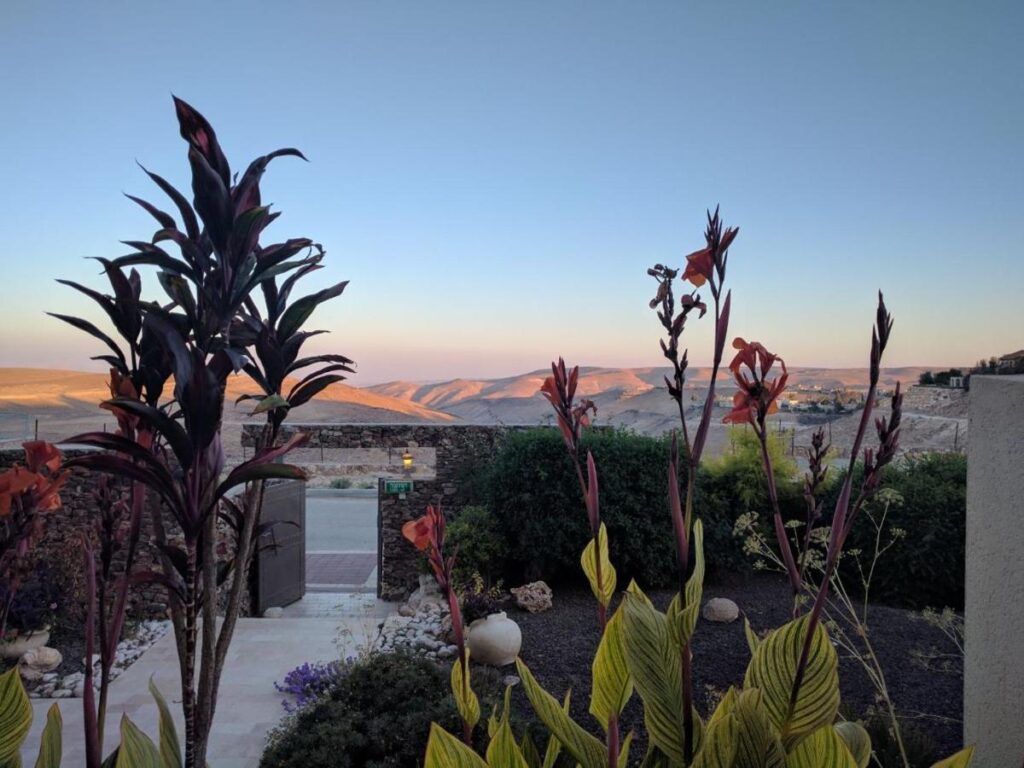
Accommodation is not possible inside the Masada Fortress complex, but there are a few options in the surrounding area, although not many. This is why many tourists prefer to take a day trip from Jerusalem or Tel Aviv. Nonetheless, we have compiled this list with some accommodation suggestions:
- HI – Massada Hostel: is a friendly hostel located at the foot of the Massada plateau. It offers private rooms for 140€ and family rooms. The complex has a swimming pool, parking, and a shared garden.
- Kfar Hanokdim: is an open-air tent complex where you can stay as a couple, family, alone, or with friends. It’s a truly original place and each tent has a private bathroom. Breakfast and dinner are included. Prices per night are over €250.
- Yehelim Boutique Hotel: This bed and breakfast is on the way to Masada and is a very charming place with stunning views of the desert. The price of the night starts at €215.
How to get to Masada?

Masada is 150 km from Tel Aviv, where Israel International Airport is located, and where flights from Europe arrive. This means you will have to travel to Masada from Tel Aviv. However, you can also depart from other cities such as Jerusalem or Nazareth. Here are the possible alternatives to get there:
- Private car: is probably the most flexible option. At the airport or in cities, you can rent a car and move freely without relying on public transport.
- Bus: This is the easiest way to get there from Jerusalem, which is almost a three-hour drive, or from Tel Aviv, which is two and a half hours. Buses run quite frequently as it is a very touristy route.
- Organized Tours : The advantage of organized tours is that you don’t have to worry about anything because they include transportation and a guide. They leave every day from Tel Aviv or Jerusalem and cost around €100.
To go up to the fortress, you have three options:
- Cable car : you take it at the foot of the plateau and it costs €7 for the outward journey and €12 for the return.
- Walk: There is a trail called Serpent Trail up to the fortress. It’s a bit steep, but it won’t take you more than an hour.
- Car: Upstairs there is a parking lot next to the visitor center where you can park your car.
What should I consider before taking a trip to Masada?
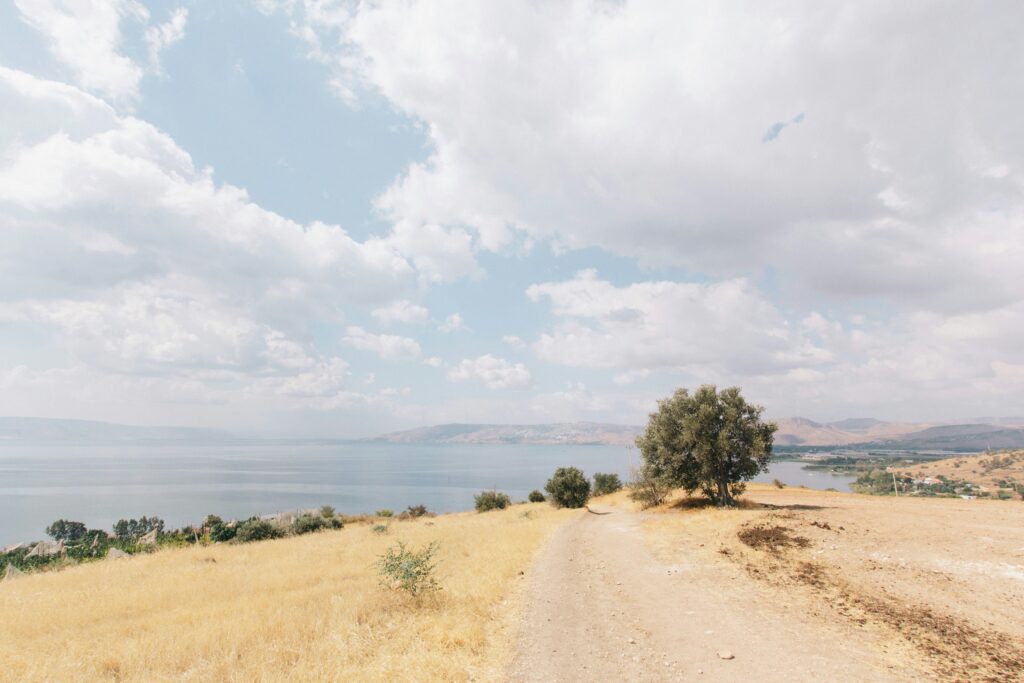
- The best time to travel to Masada is March, April, May, June, September, October, November
- Travel within Israel is safe, but it is recommended to avoid the borders with Syria, Lebanon, Egypt, and the Gaza Strip.
- To travel from Europe you do not need a visa, only a valid passport. You can stay in the country for up to 90 days.
- The currency of Israel is the Israeli shekel, which is equivalent to 1 euro = 3.93.
- It is recommended to withdraw money in your country with international cards or pay by card.
- It is completely normal to be subject to strict screening at the airport.
- In Israel, the voltage is 230V, the frequency is 50Hz and the sockets are type H.
- Water is drinkable in most cities in Israel.
- Prepare yourself for medical emergencies: travel with insurance
- The official languages of Israel are Hebrew and Arabic, but at tourist sites, you will be able to get by in English.

![8 Best Things To Do In Eilat ,Israel [2024] 1 Best Things To Do In Eilat](https://artandthensome.com/wp-content/uploads/2023/05/pexels-lio-voo-14188440-150x150.jpg)
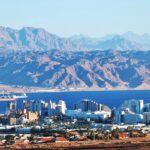
![Qumran Caves And National Park Guide [2024] 3 Qumran Caves](https://artandthensome.com/wp-content/uploads/2023/05/pexels-samir-smier-13611801-150x150.jpg)
![5 Essential Things To Do In Acre [2024] 4 Things To Do In Acre](https://artandthensome.com/wp-content/uploads/2024/04/377945128_323250456916158_140018343030827119_n-150x150.jpg)
